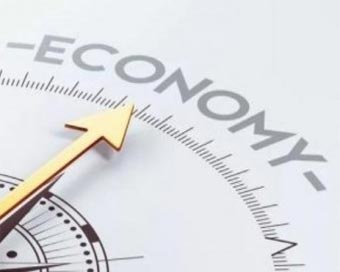 PM Modi visit USA
PM Modi visit USA Only the mirror in my washroom and phone gallery see the crazy me : Sara Khan
Only the mirror in my washroom and phone gallery see the crazy me : Sara Khan Karnataka rain fury: Photos of flooded streets, uprooted trees
Karnataka rain fury: Photos of flooded streets, uprooted trees Cannes 2022: Deepika Padukone stuns at the French Riviera in Sabyasachi outfit
Cannes 2022: Deepika Padukone stuns at the French Riviera in Sabyasachi outfit Ranbir Kapoor And Alia Bhatt's Wedding Pics - Sealed With A Kiss
Ranbir Kapoor And Alia Bhatt's Wedding Pics - Sealed With A Kiss Oscars 2022: Every Academy Award Winner
Oscars 2022: Every Academy Award Winner Shane Warne (1969-2022): Australian cricket legend's life in pictures
Shane Warne (1969-2022): Australian cricket legend's life in pictures Photos: What Russia's invasion of Ukraine looks like on the ground
Photos: What Russia's invasion of Ukraine looks like on the ground Lata Mangeshkar (1929-2022): A pictorial tribute to the 'Nightingale of India'
Lata Mangeshkar (1929-2022): A pictorial tribute to the 'Nightingale of India' PM Modi unveils 216-feet tall Statue of Equality in Hyderabad (PHOTOS)
PM Modi unveils 216-feet tall Statue of Equality in Hyderabad (PHOTOS)Hockey India has announced a 54-member core probable squad for the upcoming senior men’s
- Satwik-Chirag return as BAI names 14-strong squad for BWF Sudirman Cup Finals 2025
- Men’s Sr Hockey Nationals to be played in division-based format from April 4
- Mensik denies Djokovic 100th title in Miami final
- KIPG: Son of a vegetable vendor, Bihar’s Jhandu Kumar eyes Worlds, 2028 Paralympics
- Hardik Singh credits hard work and team unity for receiving HI Midfielder of the Year award
India has potential to become world’s 2nd largest economy by 2031: RBI Dy Governor Last Updated : 13 Jul 2024 01:12:36 PM IST 
India has potential to become world’s 2nd largest economy by 2031: RBI Dy Governor Given the country’s innate strengths, it is possible to imagine India striking out into the next decade to become the second largest economy in the world not by 2048, but by 2031, and the largest economy of the world by 2060, RBI Deputy Governor Michael Debabrata Patra has said.
In a speech at the Lal Bahadur Shastri National Academy of Administration, Mussoorie, this week, Patra said there is a traditional advantage that is likely to continue working in favour of India’s growth prospects. The development process has been predominantly driven by capital accumulation, which makes investment the main lever of growth which has stabilised at 31.2 per cent during 2021-23, and is showing signs of acceleration.
In his speech now posted on the RBI website, Patra said: “Historically, India’s investment has been financed by domestic savings, with households being the prime provider of resources to the rest of the economy. In the period 2021-23, the gross domestic saving rate has averaged 30.7 per cent of gross national disposable income. Thus, unlike many countries, India does not have to depend on foreign resources, which play a minor and supplemental role in the growth process.”
The current account gap in the balance of payments – has remained modest at around 1 per cent of GDP in 2023-24. This provides insulation to the Indian economy from external shocks and imparts viability and strength to the external sector. Illustratively, India’s gross external debt, which is the accumulation of current account deficits over time, is less than 20 per cent of GDP and almost entirely covered by the level of foreign exchange reserves, Patra explained.
Second, the rising growth trajectory on which India is poised is entrenched by macroeconomic and financial stability as inflation has fallen back into the tolerance band around the target of 4 per cent. This reflects the cumulative impact of steadfast monetary policy actions and supply management. In fact, core inflation that excludes food and fuel and is most amenable to monetary policy has fallen to its lowest level ever.
Alongside macroeconomic stability, financial stability is getting reinforced by prudent financial policies and active on-site supervision complemented with off-site surveillance, which harnesses SupTech, big data analytics and cyber security drills. India’s financial sector is predominantly bank-based. Gross non-performing assets (GNPAs) in the banking system have steadily fallen from their peak in March 2018 to 2.8 per cent of total assets by March 2024, he added.
Another aspect of macroeconomic stability is the ongoing fiscal consolidation. As a result, the general government debt which is estimated at 81.6 per cent of GDP at the end of March 2024 is expected to decline to 78.2 per cent by end of this decade by the IMF. Our projections show that if expenditures are increased on reskilling/upskilling the labour force in the most productive sectors of manufacturing, investing in digitalisation and promoting energy efficiency, the general government debt will fall even further to 73.4 per cent of GDP by 2030-313. This is significant in the context of the IMF’s projections that show the debt ratio as projected to rise to 116.3 per cent in 2028 for advanced economies and to 78.1 per cent for emerging and middle-income countries, Patra said.
He also explained that a potent growth accelerator emerges from India’s favourable demographic dynamics. India’s population is now regarded as its greatest asset in an inter-temporal perspective, especially when the rest of the world ages rapidly and populations shrink. Today, every sixth working-age person in the world is an Indian. India’s demographic dividend is expected to last for more than three decades. Every effort must be made to reap this opportunity, he added.
Patra pointed out that another growth multiplier is India’s digital revolution. India is emerging as a world leader in leveraging digital technologies for transformative change. The trinity of JAM – Jan Dhan (basic no-frills accounts); Aadhaar (universal unique identification); and mobile phone connections – is expanding the ambit of formal finance, boosting tech start-ups and enabling the targeting of direct benefit transfers. India’s Unified Payment Interface (UPI), an open-ended system that powers multiple bank accounts into a single mobile application is propelling inter-bank peer-to-peer and person-to-merchant transactions seamlessly. Payment systems in India operate on a 24 by 7 by 365 basis. The internationalisation of the UPI is progressing rapidly, the RBI deputy Governor added.IANS Mumbai For Latest Updates Please-
Join us on
Follow us on








172.31.16.186







